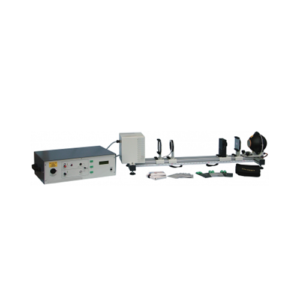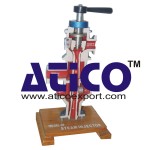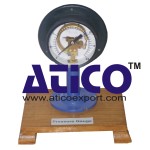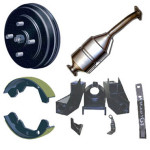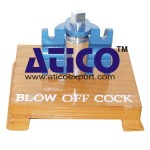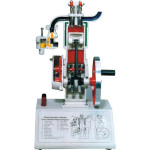Description
The equipment has two parts; an aluminium Experiment Frame and a Control Box. The frame holds all the experiment parts and allows the user to slide the parts along easily for experiments of transfer over distances. The Control Box contains the electrical controls and displays of the measured readings. The user fi ts diff erent parts to the frame to measure the radiant transfer from light and heat sources. The heat source uses a variable low-voltage electric heater on a fl at plate, creating a black body heat source of variable temperature. A thermocouple measures the heat source temperature. A moveable thermopile measures the heat radiation from the heat source at varying distances. It include plates with different apertures, surface finishes and thermocouples. They allow extra experiments that show how surface finish affects emissivity and absorptivity, and the area factor for heat transfer. The light source uses a low voltage lamp inside an integrating sphere to create a diff use light. Students can rotate the light source through a range of angles (shown on a protractor scale) for experiments in light direction. A moveable Lux Meter measures the light radiation from the light source at varying distances. We includes different optical fi lters (coloured, neutral density and infra-red block). They allow extra experiments that show how optical filters aff ect light transfer. A clear, multiline digital display on the Control Box shows temperatures and light or heat radiation. You can do tests with or without a computer connected. However, for quicker tests with easier recording of results, TecQuipment can supply the optional Versatile Data Acquisition System (VDAS®). This gives accurate realtime data capture, monitoring and display, calculation and charting of all the important readings on a computer (computer not included).
Learning outcomes
Heat:
Inverse square law (or Lambert’s distance law/area law) – showing radiation is inversely proportional to distance squared
Stefan-Boltzmann law – showing the relationship between radiation and source temperature
Kirchhoff ’s law – showing that a body with good emissivity also has good absorptivity
Area factor –showing that radiation transfer depends on the exposed area of the radiant source
Light:
Inverse square law (or Lambert’s distance law/area law) – showing radiation is inversely proportional to distance squared
Lambert’s direction law (or cosine law) – showing that radiation is proportional to the cosine of the angle between the emitter and the receiver
Transmittance and absorbance – showing that optical filters can reduce light intensity
Specifications
ATICO is committed to a programme of continuous improvement; hence we reserve the right to alter the design and product specification without prior notice.
Nett Dimensions and Weight:
Experiment frame assembled: 1300 mm long x 300 mm front to back x 300 mm high.
Control box: 600 mm wide x 350 mm front to back x 190 mm high.
Total nett weight including accessories: 25 kg
Packed Dimensions and Weight: 1420 mm x 570 mm x 500mm and 62 kg
Operating Conditions
Operating environment:
Laboratory
Storage temprature range :
–25°C to +55°C (when packed for transport)
Operating temprature range :
+5°C to +40°C
Operating relative humidity range :
80% at temperatures < 31°C decreasing linearly to 50% at 40°C

